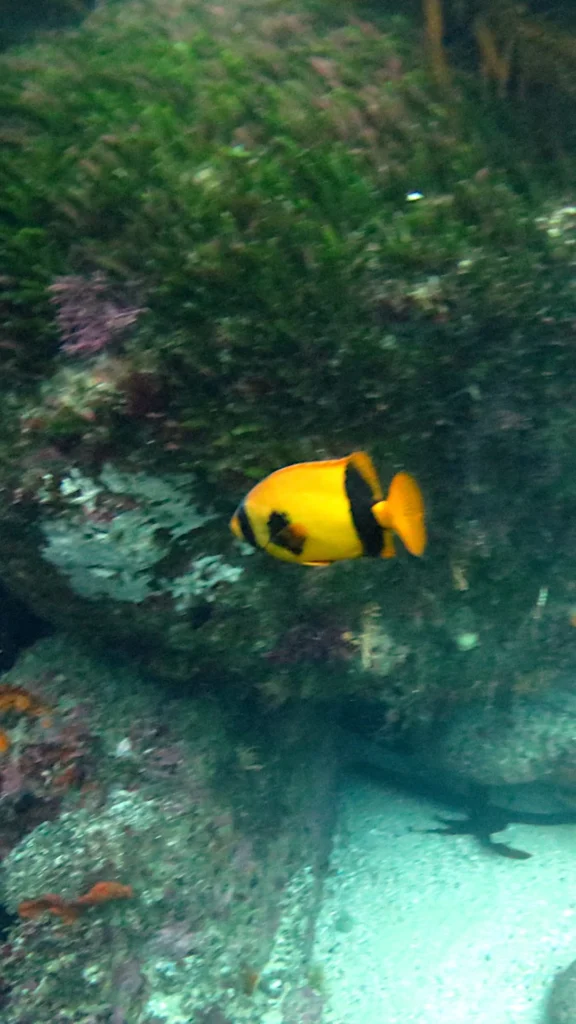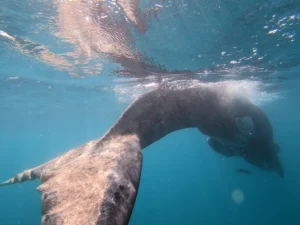The Cape knifejaw (Oplegnathus conwayi) is the cold water equivalent of the tropical Parrotfish. While adult Cape knifejaws are dark grey, nothing close to a rainbow coloured Parrotfish, their juveniles are bright yellow with black vertical bands. Their teeth fuse together to form beak-like structures much like parrotfish. Its ‘beak’ has no doubt been the inspiration for most of its common names, including black parrotfish, cuckoo bass, beaked galjoen and kraaibek (crow beak).

The Cape Knifejaw is one of the rarer fish species on the western side of False Bay. We hardly ever see them when snorkeling Cape Town’s shallower reefs and kelp forests and almost never see them outside of the MPA no-take areas. When we do see them, it’s usually when we are freediving deep and remote reefs. The reason for this is that these fish are easy targets for spearfishers and are a prized catch. They don’t easily take hooks so traditional anglers are definitely not the cause of their low numbers. Unfortunately they are on the SASSI Red list. Spearos should really think twice about targeting these fish even if their fishing licence allows them to do so.

The Cape Knifejaw is found along South Africa’s coastline from southern KZN down to False Bay in the Western Cape. It is a bottom living fish and is found on shallow reefs down to 100m. It is an omnivore and feeds mainly on algae and benthic invertebrates. It uses its beak to break up red bait (sea squirts), sponges and red algae. When it reaches adulthood it becomes territorial and pairs up with another knifejaw to hunt together. Cape knifejaws can live up to 13 years and grow up to 90cm long. The best place to see these fish is in the Castle Rock Restricted Zone just south of Miller’s Point.



